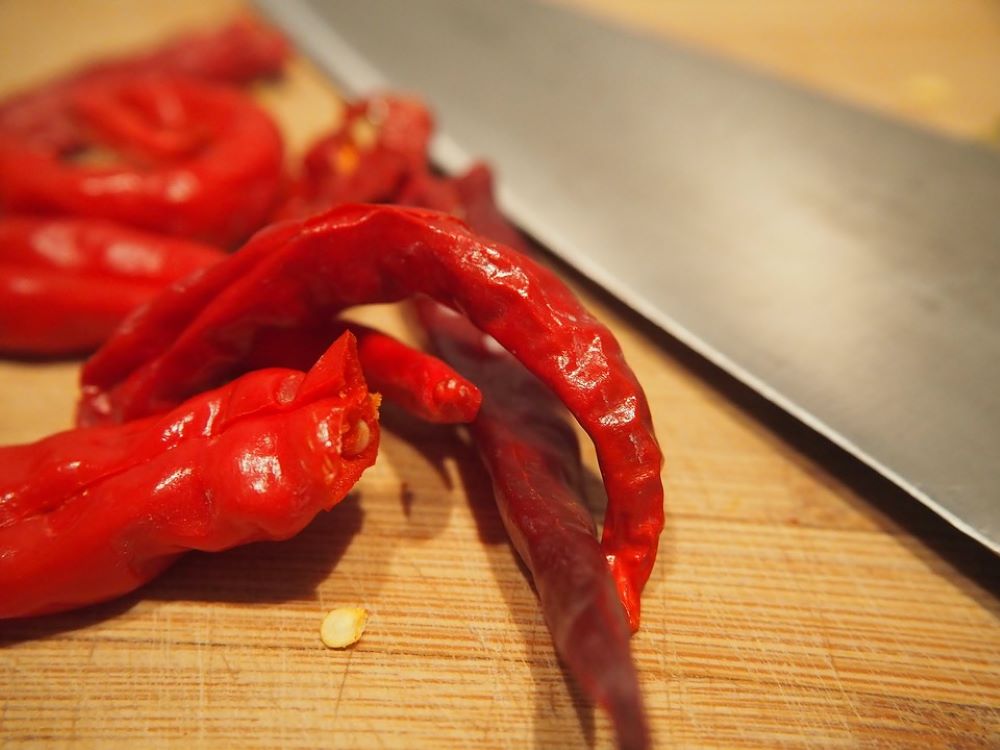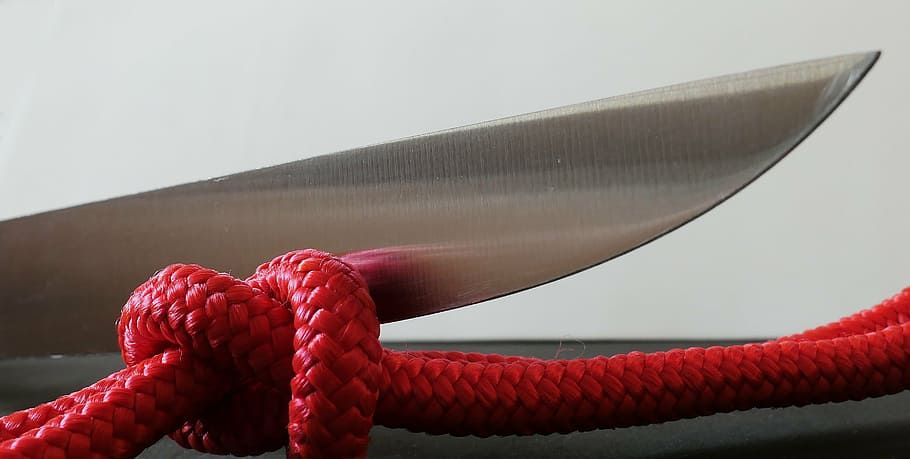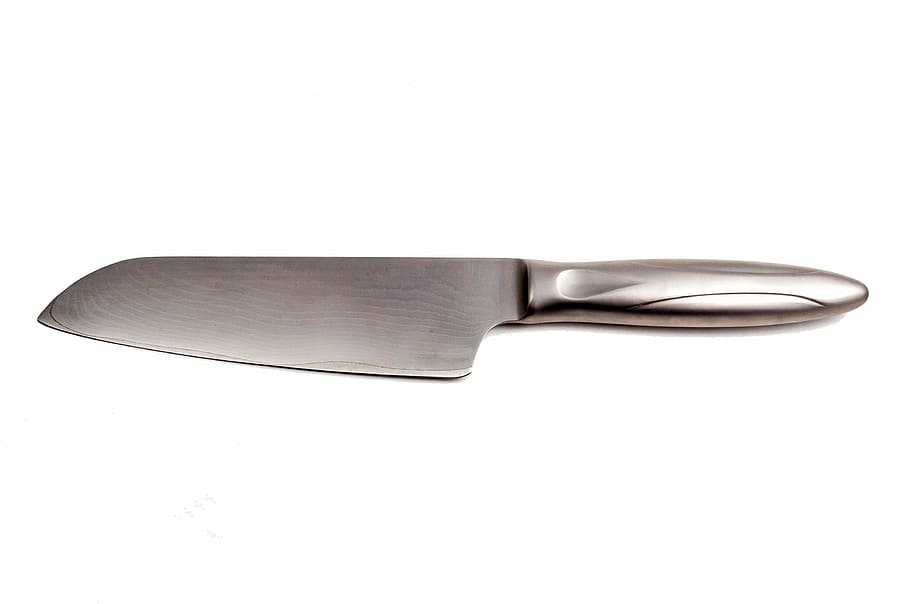The Japanese have been famous for their steel since ancient times. Great samurai swords made from Japanese steel have been featured in countless martial arts movies, slicing through trees as if cutting through thin air. In essence, these powerful swords were the samurai’s soul.
Traditionally, the famous katana, a samurai sword, has been manufactured only from the purest form of steel known as the Tamahagane.
Table of contents
What is Tamahagane?
Tamahagane, meaning precious steel, is a special, rare type of steel that was once considered to be the mother of all steels. Almost all traditional Japanese swords in the world have been fashioned with Tamahagane.

Tamahagane is known to be the purest form of steel, since it contains impurities such as silicon and manganese at a bare minimum, and the highest carbon content of approximately 1.5%.
Unfortunately, Tamahagane steel is no longer considered to be the mother of all steels. This is because modern science is now producing steels that are sharper, harder, tougher, and much better suited for crafting Japanese kitchen knives and knives in general.
Japanese steel knives are primarily used for delicate slicing and crafting precise, fine cuts in the kitchen. Contrary to western knives, they are extremely slim and light-weight, yet razor sharp. Following are the different types of steel commonly used in Japanese kitchen knives:
- Stainless steel
- High carbon steel
- Powdered steel
- Damascus steel
We will be discussing more about these types of steels later on in the article. But first, let us look at how Japanese steel differs from its Western counterparts.
Japanese steel vs western steel
The difference between Japanese steel and western or American steel is largely based on culture and culinary preferences. Each type of steel has different characteristics and properties based on these factors, which in turn gives them varying levels of durability, sharpness, toughness, and so on.
Traditional Japanese recipes include sushi, sashimi, tempura and others. Americans or Germans typically prefer food involving more meat and heavier ingredients.
Since Japanese culinary dishes require precise and fine cutting, their blades contain steel with higher carbon content to make them harder and sharper. On the contrary, western steel is comparatively softer in order to give it more durability.
On the Hardness Rockwell Scale test that measures the hardness of steels, Japanese steels tend to fall in the HRC range of 60-64. Moreover, Western steel generally lies around an HRC rating of 57.
Since Japanese steel is harder, it tends to hold onto the knife edge longer than western steels. However, this hardness tends to make it less durable and more brittle, as well. Moreover, it also requires frequent sharpening as compared to its western counterpart.
On the contrary, the softer steel in many western knives allows it to have greater durability. They also do not require frequent sharpening like Japanese steels. Unlike Japanese steels, however, they do not maintain a knife edge for as long.
In short, you might want to go for a Japanese steel knife if you require more precise cutting and need to perform delicate tasks. On the other hand, if you are looking for an all-purpose knife, western steels should probably be your choice.
What to look for in steel types?
When going out to buy a new chef knife, you will come across different types of steels. Choosing the right kind of steel can be a daunting task if you are not familiar with the various properties of steel. This is because steel’s properties have a huge impact on the performance of kitchen knives.
As such, there are various characteristics of steel that you must look out for when buying a chef knife. Choosing one characteristic such as edge retention may imply giving up on some other important characteristic such as blade toughness.
Therefore, it is you who must decide which characteristic bears more importance according to your kitchen needs.
Hardness
The hardness of steel determines the durability of your steel knife. As such, hardness is measured using the Hardness Rockwell C scale, abbreviated HRC. Japanese steel knife blades generally tend to fall within the range of 58-68 HRC, while their western counterparts typically don’t exceed HRC over 59.
The higher the HRC, the harder the steel. The harder the steel, the sharper it is and its ability to hold on to the knife edge improves. However, harder steels are inclined towards being more brittle and my chip easily. Softer steels are less sharp but more durable.

Sharpness of edge
The sharpness of steel determines its ability to cut through something. As such, harder steels guarantee taking on sharper edges. The sharpness of the edge, however, largely depends on the grain structure of the blade.
Finer grain structures of steel mean that the steel edges can be made sharper. Even if two different types of steel are of the same hardness, they can have varying abilities to become sharper based on their grain structures.
Edge retention
Edge retention, as the name implies, refers to the steel’s ability of holding on to its edge over a longer period of time. Edge retention is in turn determined by the hardness of steel blades. Moreover, it is inversely proportional to the toughness or durability of steel blades.
Some steel blades may lose their edges in a handful of uses. Other steel blades may retain their edges for longer periods of time without the need to be sharpened. You must decide whether edge retention is an important characteristic for choosing your Japanese steel knife.
Ease of sharpening
All types of steels, regardless of their edge retention, need to be sharpened eventually. Even though it is not a particularly important characteristic, you might want to look for ease of sharpening when choosing a Japanese steel knife.
Typically, it is tougher to sharpen harder steels. However, steels that have finer grain structures are easier to sharpen.

Durability
Durability, or toughness, refers to the ability of the steel blade to resist damage from sudden impacts and forceful blows so that it remains fit for use. Steel blades that do not offer much durability have a higher tendency of cracking and chipping.
As such, softer steels offer higher durability than harder ones. This is because as the hardness of steel increases, there are higher chances of the edge of the blade to chip or break off. You must, therefore, find the right balance between durability and edge retention to acquire a perfect steel blade.
Resistance to corrosion
External factors such as humidity, moisture, etc. are likely to impact knife performance. As such, corrosion resistance is the ability of the steel blade to resist rust and stains on itself, thereby maintaining its performance.
Steel blades can also be impacted by acidic substances in the kitchen, such as lemon. Therefore, you might want to choose a knife blade that offers the most resistance to corrosion.
Now that you are thorough with different properties of steel, you can make an informed choice regarding your steel blade.
You might want to go for steels with higher durability if you ought to use it in tough environments, but that would mean giving up on edge retention to some extent. For delicate and precise cuts, harder steels should be your preference.
Different types of Japanese steel used in kitchen knives
There are a lot of varieties of steels available out there having diverse qualities and characteristics. This section demonstrates some of the various Japanese steels so that you can determine which one best suits your needs and requirements.
High carbon steel

Japanese blacksmiths have been incorporating carbon into steel since ancient times to improve upon its hardness. Typically, high carbon steel tends to have a minimum carbon (C) content of 0.5% to 0.8%. Most Japanese knives made of high carbon steel, however, will typically contain a carbon content of more than 1%.
The biggest advantage of high carbon steel is that it embraces higher levels of hardness, such as 60-65 HRC and above. Other benefits of this steel type is that it is easy to sharpen and has high resistance to wear. It is also well known for great edge retention.
Chefs who want high, cutting edge performance prefer this type of high carbon Japanese steel. However, high carbon steels tend to be less durable and are prone to rusting and corrosion. For preventing oxidation, this steel is treated with food safe oils that are non-corrosive in nature.
There are many types of high carbon steels, such as white steel and blue steel.
White steel or Shiro-ko
White steel is deemed to be the purest of all carbon steel types. Also known as shiro-ko, it is the easiest to sharpen and can be forged to an exceptional level of hardness, further giving it outstanding edge retention.
Traditional Japanese knives tend to use this steel. However, these shiro-ko knives tend to be the most reactive as well. Therefore, you must be careful with its maintenance. Harder and sharper steels, as discussed earlier, are more prone to breaking and chipping as well.
White steels come in two types as listed below:
- Shirogami#1 steel or white steel #1: If you further refine white steel #2 and add a bit more carbon to it, you will get white steel #1. White steel #1 has extra hardness owing to this extra level of carbon in its composition. Similar to its other type, it has good edge retention, excellent sharpness and fine edge, as well as provides ease of sharpening.
- Shirogami#2 steel or white steel #2: This high carbon steel embraces impressive purity and an extremely fine grain structure. It has outstanding sharpness as well as a cutting-edge that is low maintenance. It typically holds a Rockwell rating of the range 60-63 HRC and carbon content generally varies between 1.05% to 1.15%.
Blue steel or Aogami
Blue steel comes in two forms, primarily referred to as Blue steel #1 and 2. This Japanese steel is obtained by adding chromium and tungsten to white steel.
- Blue Steel #2: If you add Chromium (0.2-0.5%) and Tungsten (1.0-1.5%) to white steel#2, you obtain this high carbon steel type. Adding these two elements allows for increased toughness as well as better edge retention. Edge retention is superior in blue steel#2 as compared to white steel#2.
- Blue Steel #1: Blue steel #1 is similar to blue steel #2, only with higher amounts of carbon (1.25- 1.35 %), chromium (0.3-0.5 %) and Tungsten (1.5-2.0 %). These elements in increased amounts are responsible for increased toughness, hardness, sharpness, as well as improved edge retention and resistance to abrasion.
What is Aogami super steel?
This is also known as the blue super steel. Its composition includes higher amounts of carbon (1.40-1.50%), chromium (0.3-0.5%), and Tungsten (2.0-2.5%) as compared to Blue steel #1, with the addition of the element Molybdenum (0.30-0.50%).
Aogami super steel is one of the finest Japanese steels in its high carbon range. It is best known for its exceptional edge retention, as well as better edge sharpness and high level of hardness without being brittle at the same time.
Stainless steel

Stainless steel consists of a chromium (Cr) content of no less than 10.5%. Adding chromium to steel makes it stainless, or in other words, resistant to corrosion. For enhancing resistance to corrosion and improving other knife properties, various other elements can also be added to stainless steel.
The main advantages of this type of steel is that its high corrosion resistance makes it easier to maintain. Adding high performance alloys to stainless steel also gives it improved edge retention. There are a number of popular stainless steels in the market, such as Gingami#3, VG10, and ZDP189.
- Gingami #3: This Japanese steel hoards excellent sharpness edge and edge retention that is comparable to even some of the high carbon steels. It is obtained by adding a chromium content of more than 13% to Shiro-ko (white) steel.
- VG10: The VG10 is a Japanese steel which is obtained by adding high concentrations of chromium, cobalt, and ofcourse, carbon. These elements make this steel type harder, sharper, abrasion resistant, corrosion resistant, as well as harder to break.
- ZDP189: One of the hardest stainless Japanese steel is the ZDP189. Such is its hardness that it can be compared to Aogami super steel discussed in high carbon steels. This stainless steel hoards the ultimate level of sharpness, but is susceptible to breaking or chipping.
Powdered steel
Powdered steels represent the new generation of modern Japanese steels, designed for serious chefs in the Japanese kitchen. They are formed by mixing a variety of metal powders and compressing them into shape. They are then heated to allow them to bond together.
Powdered steel hoards extraordinary sharpness, longer edge retention, as well as good resistance to corrosion. Moreover, it allows achieving a higher Rockwell C rating of 64-68 HRC than what is obtained through traditional steel making methods. That too, without compromising on toughness.
Since they are obtained after going through an intricate and complicated metallurgical process, they are quite expensive. You might want to go for this Japanese steel if you are a serious culinary professional or knife enthusiast.
Damascus steel
If you ever come across a steel that has a wavy patterned design, rest assured that you are looking at Damascus steel. Damascus steel is widely known for its sleek look and aesthetic beauty. Damascus steel is obtained after layering different materials of steel.
Apart from being pleasing to the eye, this steel is also known to offer high quality and sharpness, based on the core of the knife steel that lies in the middle of the steel layers. Moreover, it is revered for maintaining a keen edge, and also for its hardness and flexibility.
Summary of famous Japanese steels
| Name of Japanese Steel | HRC (Hardness) | Carbon % | Chromium % | Tungsten % | Molybdenum % |
| White Steel 2 | 60-63 | 1.0-1.2 | |||
| White Steel 1 | 61-64 | 1.2-1.4 | |||
| Blue Steel 2 | 61-64 | 1.05 to 1.15 | 0.2-0.5 | 1.0-1.5 | |
| Blue Steel 1 | 61-64 | 1.25-1.35 | 0.3-0.5 | 1.5-2.0 | |
| Blue Super Steel | 61-65 | 1.40-1.50 | 0.3-0.5 | 2.0-2.5 | 0.30-0.50 |
| Gingami no.3 | 60-61 | 0.95 to 1.10 | 13.00 to 14.50 | ||
| VG10 | 60-61 | 0.95 to 1.05 | 14.5-15.5 | 0.9 to 1.2 | |
| ZDP189 | 65-67 | 3 | 20 |
In conclusion
Now that you are aware of the different types of Japanese steels out there, we are sure you can make an informed choice when going chef knife shopping. If you ask us though, we would recommend our high carbon steel knives such as our multipurpose hand forged chef knife or our handmade Serbian chef knife.
Head over to HDMD store to shop our premium range of high carbon steel knives now!









